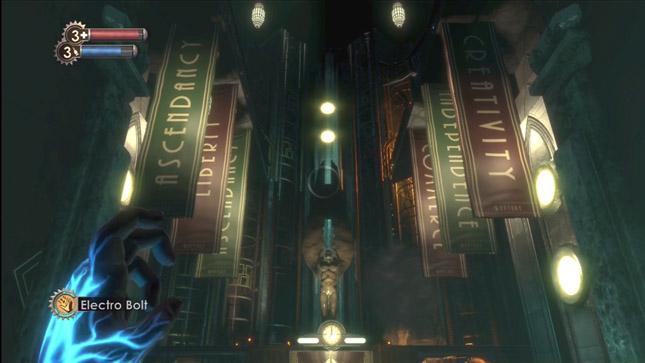We talk a lot these days about the effect of technology–sweeping, growing like mushrooms, constantly changing every nano-second–of our lives.
We talk about smart phones, iPhones, iPads, Kindles, texting, tweets, blogs and e-mails (already considered a dated technology). We talk about aps, wi-fi and the net.
We still talk about video games, as in “All they ever do is play video games.” That means these days Nintendo, XBox as well as games that resemble movies and games that become movies. Rarely, however, do we talk about the art of video games.
Now, though, you can talk about the art of video games. At the Smithsonian American Art Museum, there’s a popular (and big, big, big) exhibition called “The Art of the Video Game.” Oddly enough, it focuses not only on the art of the video game but — just as important — on the history of video games across five eras and 40 years of video game development. It focuses on graphics, technology and storytelling by way of examining 20 gaming systems that range from the Atari VCS to the Play Station 2, which continues to wreak havoc with the budgets of the parents of budding gamers all over the United States.
“Video games are a prevalent and increasingly expressive medium within modern society,” said Chris Melissinos, the former chief gaming officer of Sun Microsystems and founder of Past Pixels, who is the guest curator for the exhibition. “In the 40 years since the introduction of the first home video game, the field has attracted exceptional artistic talent. Video games, which include classic components of art, offer designers a previously unprecedented method of communicating with and engaging audiences by including a new element. The player who completes the vivid, experiential art form by personally interacting with the game elements.”
There are 80 video games in the exhibition, which were selected with the help of a popular vote. The games are represented by way of images, video footage and interviews with game developers, graphic artists, backed up by actual game consoles and large screen shots from current and past video games. If that sounds a little bit dry, the reality is far from dry or academic.
You may, at first, not be able to concentrate on getting your mind around the thematic “Art of the Video Game.” Try “Sounds of the Video Game,” bells and whistles of the video game, or the sheer presence of so many video games in one place, making that area set apart for the exhibition, a giant arcade.
Best of all for gamers of all ages, you can even play video games: five of them, to be exact, from each key era in the history of video games. For this writer (and video game luddite), it doesn’t go back far enough, given that I used to play pinball machines at a time when whatever remaining arcades survived were being taken over by, you guessed it, video games like Pac Man, Space Invaders and Donkey Kong before the revolutionary arrival of Super Mario Brothers. We remember playing Pong, a kind of electronic ping pong game which could be played by two people at a bar table, which was as slow as molasses, perfect for people who were drinking and playing at the same time.
When you walk into this exhibition, you might feel as if you’re being ambushed. It’s alive. Located near the entrance are the five playable games, where at an early visit to the exhibition back in April (it runs through September 30), we watched a father and son–two generations of gamers–take turns at Pac Man, where ravenous heads-with-toothy mouths–ate their way through mazes–or not. “I thought dad did pretty well,” the son said. “Naw, I was a lot quicker back in the day.” Pac Man, from 1981, was a game impossible to forget probably because of its figures and their voracious appetites, which would eventually expand to include a Pac Woman.
As art goes, it was simple, like an early Disney cartoon or a Japanese comic book. The other four games which visitors can play all advance the “art” of the video game. You look at Super Mario Brothers, which was actually made into a movie with their villains and heroes and bouncing characters, and the plot line and atmospherics of The Secret of Monkey Islands, and later the much more intricate Myst and Flower. You begin to see the creation of stories with sequels, increasingly difficult environments to navigate, requirements for imagination, the ability to think ahead and faster and faster reaction times.
If you go through the exhibition, with all its noises and high-spirited colors, the energy created by older visitors (nostalgia) and younger visitors (excitement along with a nerdy feel for gaming esoterica), you get a good sense of the boundless potential for the world of video games. More than that, you get a hint of how games are connected to everything else that’s going on inside smart phones, on computer screens, in the wired, miniaturized, instantaneous world we live in, as well as its explosive nature.
Thousands of gamers attended back in March when the exhibition held a three-day, “GameFest,” with talks, discussions, open game playing, music and movies. Attendance remains high: it’s after all about the gamer generation, triumphant and validated.
- Bioshock








